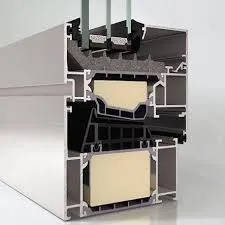ornamental metal work
The Art of Ornamental Metal Work A Timeless Craft
Ornamental metalwork is a captivating blend of artistry and craftsmanship that has evolved over centuries. This form of art serves not only practical purposes but also enhances the aesthetics of various environments, from grand architectural structures to smaller, intimate spaces. The meticulous work involved in creating ornamental metal pieces transforms mere metal into stunning sculptures, intricate railings, beautiful gates, and decorative furniture, making it an essential discipline in both historical and contemporary design.
Historical Overview
The roots of ornamental metalwork can be traced back to ancient civilizations, where handcrafted metal items were created for functional and symbolic purposes. Civilizations such as the Egyptians, Babylonians, and Greeks utilized gold, silver, and bronze to produce artifacts that indicated status and craftsmanship. The Medieval period saw a significant development in metalworking techniques, with blacksmiths and artisans pushing boundaries to create elaborate designs that adorned churches, castles, and monuments. Techniques such as engraving, embossing, and inlaying flourished, giving rise to the iconic Gothic and Renaissance styles that are still admired today.
In the 19th century, the Industrial Revolution brought about significant changes in metalworking. The introduction of machinery and mass production techniques made ornamental metalwork more accessible to a broader audience. However, this shift also led to a decline in traditional craftsmanship as the once-prevalent handmade techniques gave way to machine-made goods. Despite these changes, many artisans continued to value the intricacies of handwork, sparking a revival of interest in decorative arts.
Techniques and Materials
Ornamental metalwork encompasses a variety of techniques, each contributing to the uniqueness and beauty of the finished piece. Common materials used include wrought iron, brass, bronze, aluminum, and stainless steel. Each material offers distinct properties that influence the design and durability of the artwork.
1. Wrought Iron Known for its malleability and strength, wrought iron is often used in gates, railings, and decorative elements. Artisans can create intricate scrollwork and patterns, making it a preferred choice for traditional designs.
2. Cast Iron This material allows for complex shapes and durability, often seen in garden furniture, railings, and decorative architectural details. The ability to create large pieces with intricate designs makes cast iron a favorite among designers.
ornamental metal work

3. Brass and Bronze These metals are prized for their aesthetic appeal and corrosion resistance. They are commonly used in decorative hardware, lighting fixtures, and sculptures. The warm, golden tones of brass and the rich patina of bronze evoke elegance in any space.
4. Aluminum Light and resistant to corrosion, aluminum has become increasingly popular in contemporary designs. Its versatility allows for modern, sleek creations that can be utilized both indoors and outdoors.
5. Stainless Steel Known for its durability and modern appearance, stainless steel is often used in contemporary architecture and design. Its reflective quality and resistance to rust make it an excellent choice for a variety of ornamental applications.
The Role of Ornamental Metal Work Today
Today, ornamental metal work continues to thrive as both an art form and a functional craft. Architects and interior designers frequently incorporate metalwork into their projects, recognizing its ability to add character and a sense of history to modern spaces. Custom metal pieces, such as decorative screens, railings, and furnishings, allow for personalized expression while maintaining a connection to traditional craftsmanship.
Moreover, a growing appreciation for artisanal skills has led to a resurgence of interest in handmade metalwork. Artisans around the world are reviving traditional techniques and experimenting with contemporary designs, showcasing the versatility of metal as a medium for creative expression.
Conclusion
Ornamental metalwork is a remarkable craft that marries functionality with artistry. As it continues to evolve, the legacy of centuries of craftsmanship endures. Whether it graces the exterior of a historic building or enhances the warmth of a modern home, ornamental metalwork remains an integral part of our cultural heritage, reflecting our appreciation for beauty in everyday life. Its ongoing evolution promises to inspire future generations of artisans and designers, ensuring that this timeless craft continues to flourish.
-
Wrought Iron Components: Timeless Elegance and Structural StrengthNewsJul.28,2025
-
Window Hardware Essentials: Rollers, Handles, and Locking SolutionsNewsJul.28,2025
-
Small Agricultural Processing Machines: Corn Threshers, Cassava Chippers, Grain Peelers & Chaff CuttersNewsJul.28,2025
-
Sliding Rollers: Smooth, Silent, and Built to LastNewsJul.28,2025
-
Cast Iron Stoves: Timeless Heating with Modern EfficiencyNewsJul.28,2025
-
Cast Iron Pipe and Fitting: Durable, Fire-Resistant Solutions for Plumbing and DrainageNewsJul.28,2025
-
 Wrought Iron Components: Timeless Elegance and Structural StrengthJul-28-2025Wrought Iron Components: Timeless Elegance and Structural Strength
Wrought Iron Components: Timeless Elegance and Structural StrengthJul-28-2025Wrought Iron Components: Timeless Elegance and Structural Strength -
 Window Hardware Essentials: Rollers, Handles, and Locking SolutionsJul-28-2025Window Hardware Essentials: Rollers, Handles, and Locking Solutions
Window Hardware Essentials: Rollers, Handles, and Locking SolutionsJul-28-2025Window Hardware Essentials: Rollers, Handles, and Locking Solutions -
 Small Agricultural Processing Machines: Corn Threshers, Cassava Chippers, Grain Peelers & Chaff CuttersJul-28-2025Small Agricultural Processing Machines: Corn Threshers, Cassava Chippers, Grain Peelers & Chaff Cutters
Small Agricultural Processing Machines: Corn Threshers, Cassava Chippers, Grain Peelers & Chaff CuttersJul-28-2025Small Agricultural Processing Machines: Corn Threshers, Cassava Chippers, Grain Peelers & Chaff Cutters












